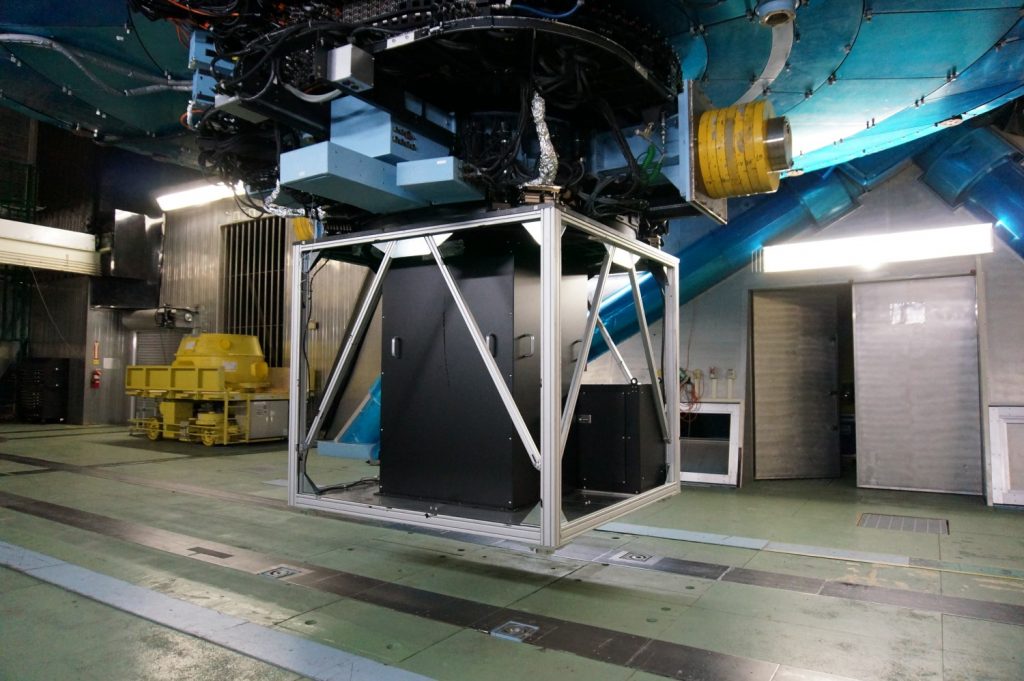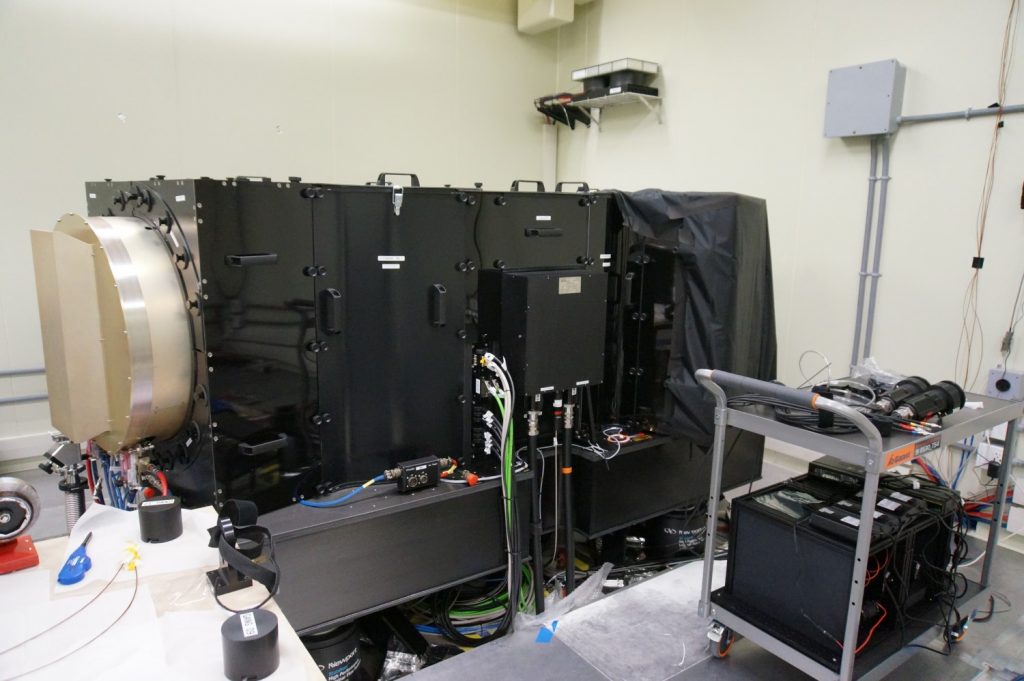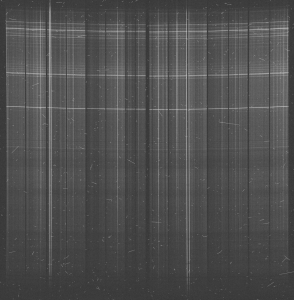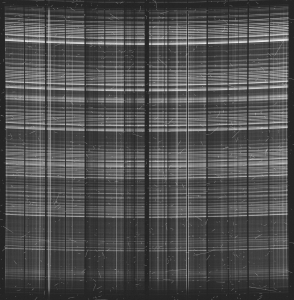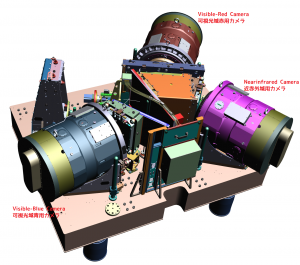We PFS project met a big milestone in September 2021. We finally carried out on-telescope test integrating the subsystems Prime Focus Instrument, Spectrograph Module 1, Fiber Cable System 1, and Metrology Camera System!!
PFS instrument consists of four major subsystems: Prime Focus Instrument (PFI) on the prime focus of Subaru Telescope, Metrology Camera System (MCS) on Cassegrain Focus, four identical Spectrograph Modules in the dedicated clean room in the dome building, and four units of the fiber cable systems routed on the telescope and the dome.
Fibers on the PFI focal plane catch light from stars, galaxies and night sky. Each 2400 fiber is assembled with 2-axis actuator (nicknamed “Cobra”), and we move the fibers to the targets on the focal plane, by measuring their positions using MCS. Fiber cable system delivers the light from PFI to Spectrograph Modules, which take spectra in the visible and near-infrared bands with three cameras.

(Credit: Kavli IPMU / NAOJ / PFS project)
Since 2018, when we started delivering PFS subsystems, we have carried out on-telescope tests of MCS using a pin-hole mask, and studied sky spectra using the Spectrograph Module 1 and the fiber cable system 1 connecting the small telescope SuNSS. At last, in September 2021, we carried out the first on-telescope test with all delivered subsystems (see below photos).
Our main objectives of this test were to calibrate Cobras to operate them on the telescope, and to take spectra to develop the software modules for data reduction (i.e., data reduction pipeline). We also aimed at confirming that MCS image quality and centroiding error for the real system.
The test was long, about two week. During these weeks, not only colleagues who worked on-site, but many colleagues of PFS technical team joined the test activities, data analysis and discussions online from all over the world, namely, Taiwan, Princeton, Marseille, and Japan. Thanks to all the efforts, the test campaign was so productive: we finished Cobra calibration at zenith and they moved reasonably as well as tested off-telescope (in precision of about 10um). We found MCS image quality and impact of seeing on centroiding error were comparable to the past.
Besides, we took many spectra using the calibration lamps, and in the last day, we took sky spectra! These data will be used for developing the data reduction pipelines.
On the other hand, we also found a few issues and ran out of time to complete a few tasks. We are analyzing the data in details and will improve the performance operation to proceed the next tests.


